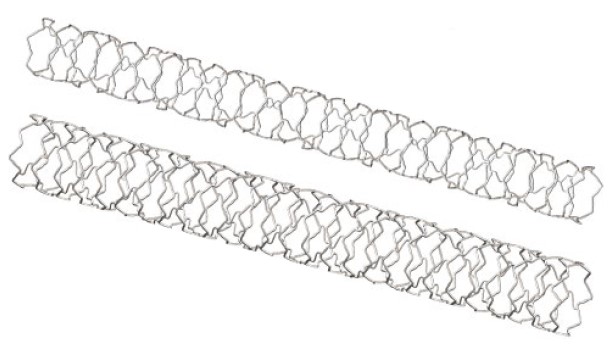SLENDER Sirolimus-Eluting Coronary Stent Integrated Delivery System and DIRECT Sirolimus-Eluting Coronary Stent Rapid Exchange Delivery System – P210014
This is a brief overview of information related to FDA’s approval to market this product. See the links below to the Summary of Safety and Effectiveness Data (SSED) and product labeling for more complete information on this product, its indications for use, and the basis for FDA’s approval.
Product Names: SLENDER Sirolimus-Eluting Coronary Stent Integrated Delivery System and DIRECT Sirolimus-Eluting Coronary Stent Rapid Exchange Delivery System
PMA Applicant: Svelte Medical Systems, Inc.
Address: 675 Central Avenue, Suite 2, New Providence, NJ 07974 USA
Approval Date: December 13, 2021
Approval Letter: Approval Order
What is it?
The Svelte Family of Sirolimus-Eluting Coronary Stent Systems (Svelte DES) is intended to treat a narrowed blood vessel (coronary artery) caused by coronary artery disease. Both systems consist of a cobalt-chromium alloy metal stent covered with the drug sirolimus and a bioresorbable polymer (PEA) coating and a catheter delivery system.
How does it work?
A physician inserts the stent’s delivery balloon catheter into a blood vessel in the patient’s arm or groin. The stent is then positioned at the site of the coronary artery and the balloon is inflated, causing the stent to expand and open the coronary artery. The stent remains permanently implanted within the coronary artery to help keep it open and improve the supply of blood and oxygen to the heart. The drug (sirolimus) is released over time from the Svelte stent surface into the coronary artery wall to help prevent re-narrowing of the coronary artery, which sometimes occurs after the stent is implanted.
When is it used?
The Svelte family of stents is intended for use in patients who have a narrowing in their coronary arteries. Specifically,
- The SLENDER Sirolimus-Eluting Coronary Stent Integrated Delivery System is used in patients experiencing symptoms of heart disease due to coronary artery atherosclerotic lesions that are 24 mm or smaller in length and have a diameter that is between 2.25 mm and 4.00 mm in size.
- The DIRECT Sirolimus-Eluting Coronary Stent Rapid Exchange Delivery System is used in patients experiencing symptoms of heart disease due to coronary artery atherosclerotic lesions that are 34 mm or smaller in length and have a diameter that is between 2.25 mm and 4.00 mm in size.
What will it accomplish?
A clinical investigation included 1639 patients with coronary artery disease. Of these patients, 827 were treated with the Svelte DES and 812 were treated with another US legally marketed device with similar use (Xience or Promus). Because the frequency of heart attacks (myocardial infarction) in both groups was higher than expected during the first year after treatment, the data from the clinical investigation did not statistically determine if the Svelte stent performed as well as the Xience and Promus stents. However, patients in both groups had very similar rates of death, heart attack and the need for repeated treatment of the same coronary artery (revascularization). Additionally, images of the coronary arteries taken during the procedure and again a year later showed that the coronary arteries treated with the Svelte stent had stayed as open and free of blockages as the arteries treated with the Xience and Promus stents.
When should it not be used?
The Svelte family of stents should not be used in patients:
- Who are unable to receive anti-platelet and/or anti-coagulant therapy.
- With known hypersensitivity to device materials including sirolimus, poly(ethylene adipate) (PEA) III Ac Bz (PEA co-polymer), cobalt, chromium, nickel, tungsten or contrast media.
- With lesions that will prevent complete inflation of an angioplasty balloon or proper placement of a coronary stent or delivery system, including chronic total occlusions.

